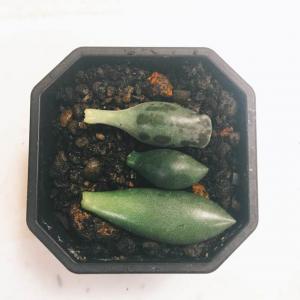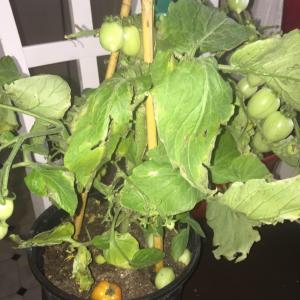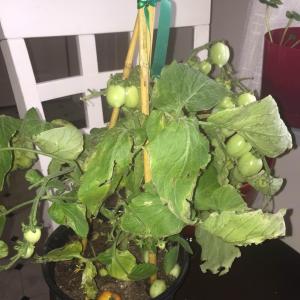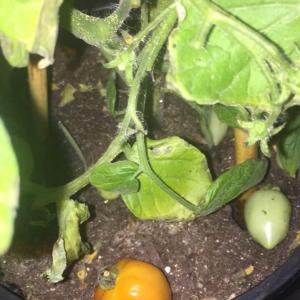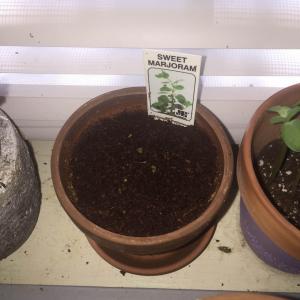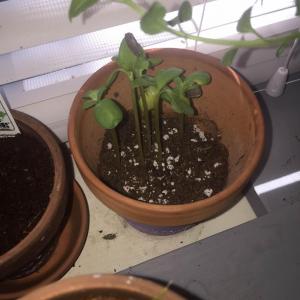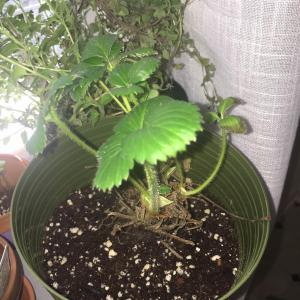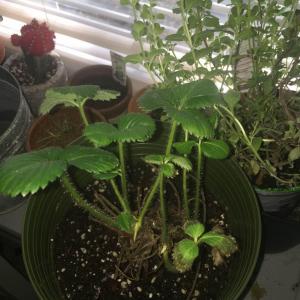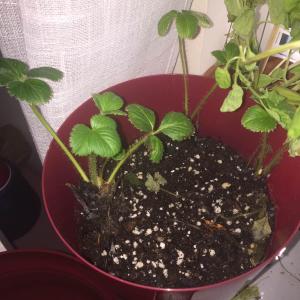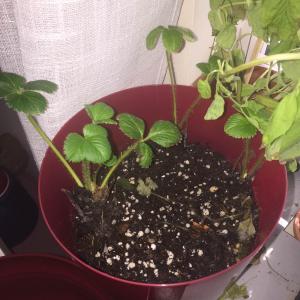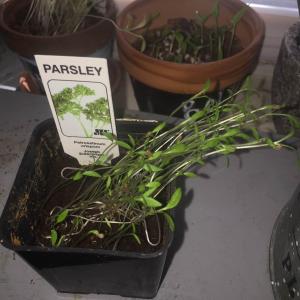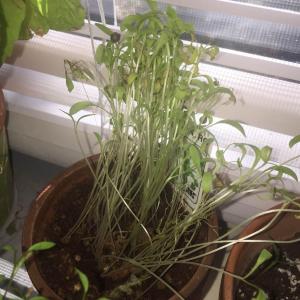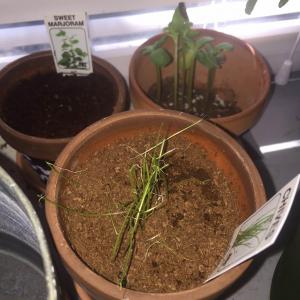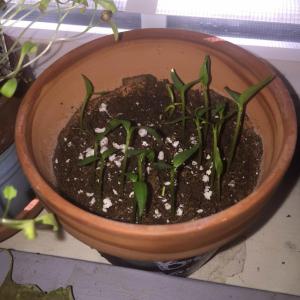文章
Miss Chen
2018年02月09日

Description: This is a perennial herbaceous plant up to 3' tall and branching frequently, often with a bushy appearance. The green or reddish stems are strongly four-angled and have scattered white hairs along the ridges. The opposite leaves are up to 2½" long and narrowly lanceolate or linear. They are sessile, and have smooth margins. The largest leaves are ¼ - ½" across. When damaged, the foliage releases a strong mint scent.
Numerous flattened heads of small white flowers (often with purple dots) occur at the ends of the upper stems. Each head is up to ¾" across and can contain up to 50 flowers. However, only a few of these are in bloom at the same time, beginning with the outer circle of flowers and ending towards the center. Each tubular flower is about 1/8" long and 2-lipped. The blooming period occurs during the middle of summer and lasts about a month. Each small flower produces 4 tiny, finely pitted, dull black seeds. These seeds are distributed to some extent by the wind. The root system produces rhizomes, which spread a short distance from the mother plant. Soon, a small colony of plants are formed vegetatively.
Cultivation: The preference is full or partial sun, and moist to average conditions. The soil can contain loam, sand, clay, or gravel – this plant is not fussy about soil texture. During drought, the lower leaves will turn yellow and fall off. This plant is easy to grow, and less subject to foliar disease than some other mints, such as Monarda spp. However, stressed out plants sometimes succumb to rust.
Range & Habitat: The native Common Mountain Mint is widely distributed in Illinois, but it is uncommon or absent from southern Illinois and a few western counties (see Distribution Map). This plant is occasional to locally common in moist to mesic black soil prairies. Other habitats include moist sand prairies, moist meadows in woodland areas, thickets, fens, swamps, and rocky bluffs. This is probably the most common Mountain Mint in Illinois.

Faunal Associations: Many insects are strongly attracted to the flowers, including various bees, wasps, flies, small butterflies, and beetles. Typical visitors from these groups include honeybees, Cuckoo bees, Halictid bees, Sphecid wasps, Eumenine wasps, bee flies, Tachinid flies, Wedge-shaped beetles, and Pearl Cresecent butterflies. Most of these insects seek nectar. Mammalian herbivores and many leaf-chewing insects apparently find the mint fragrance of the leaves and stems repugnant, and rarely bother this plant.
Photographic Location: The photographs were taken at a prairie of Parkland College in Champaign, Illinois.
Comments: The name 'Mountain Mint' is something of a misnomer, because this plant and other similar species in this genus do not usually occur in mountainous habitats. Common Mountain Mint is similar in appearance to Pycnanthemum tenuifolium (Slender Mountain Mint). It can be distinguished from the latter species by the white hairs along the ridges of its stems, and the occurrence of leaves greater than ¼" across. The stems of Slender Mounntain Mint lack hairs.
Numerous flattened heads of small white flowers (often with purple dots) occur at the ends of the upper stems. Each head is up to ¾" across and can contain up to 50 flowers. However, only a few of these are in bloom at the same time, beginning with the outer circle of flowers and ending towards the center. Each tubular flower is about 1/8" long and 2-lipped. The blooming period occurs during the middle of summer and lasts about a month. Each small flower produces 4 tiny, finely pitted, dull black seeds. These seeds are distributed to some extent by the wind. The root system produces rhizomes, which spread a short distance from the mother plant. Soon, a small colony of plants are formed vegetatively.
Cultivation: The preference is full or partial sun, and moist to average conditions. The soil can contain loam, sand, clay, or gravel – this plant is not fussy about soil texture. During drought, the lower leaves will turn yellow and fall off. This plant is easy to grow, and less subject to foliar disease than some other mints, such as Monarda spp. However, stressed out plants sometimes succumb to rust.
Range & Habitat: The native Common Mountain Mint is widely distributed in Illinois, but it is uncommon or absent from southern Illinois and a few western counties (see Distribution Map). This plant is occasional to locally common in moist to mesic black soil prairies. Other habitats include moist sand prairies, moist meadows in woodland areas, thickets, fens, swamps, and rocky bluffs. This is probably the most common Mountain Mint in Illinois.

Faunal Associations: Many insects are strongly attracted to the flowers, including various bees, wasps, flies, small butterflies, and beetles. Typical visitors from these groups include honeybees, Cuckoo bees, Halictid bees, Sphecid wasps, Eumenine wasps, bee flies, Tachinid flies, Wedge-shaped beetles, and Pearl Cresecent butterflies. Most of these insects seek nectar. Mammalian herbivores and many leaf-chewing insects apparently find the mint fragrance of the leaves and stems repugnant, and rarely bother this plant.
Photographic Location: The photographs were taken at a prairie of Parkland College in Champaign, Illinois.
Comments: The name 'Mountain Mint' is something of a misnomer, because this plant and other similar species in this genus do not usually occur in mountainous habitats. Common Mountain Mint is similar in appearance to Pycnanthemum tenuifolium (Slender Mountain Mint). It can be distinguished from the latter species by the white hairs along the ridges of its stems, and the occurrence of leaves greater than ¼" across. The stems of Slender Mounntain Mint lack hairs.
0
0
文章
Miss Chen
2018年02月08日

Description: This herbaceous perennial plant is 2-4' tall, branching frequently to create a slender bushy appearance. The stems are light green, 4-angled, and densely pubescent on all sides. Pairs of opposite leaves occur along these stems, becoming gradually smaller and more slender as they ascend. These leaves are up to 1-3" long and ¼–¾" across; they are narrowly lanceolate to lanceolate in shape and either sessile or short-petiolate. The leaf margins are entire (toothless) and ciliate. When petioles are present, they are light green and densely short-pubescent. The upper leaf surface is grayish green and short-pubescent, while the lower leaf surface is slightly more pale and densely pubescent. The foliage has a typical mint fragrance. The upper stems terminate in branching flowerheads of flowers; individual heads are flat-topped and densely flowered, spanning up to 1" across.
Flowerbud Heads
Each flower is about ¼" long (from upper lip to lower lip), consisting of a 2-lipped corolla, a long-tubular calyx with 5 teeth, 4 stamens, and a pistil. The corolla is white; there are purple specks and dots scattered across its throat and the lobes of its lips. The upper lip of the corolla consists of a short hood, while its lower lip is longer and 3-lobed. The sides of the calyx tube are light green, vertically ribbed, and pubescent; the teeth along the upper rim of the calyx are erect and narrowly triangular in shape. At the base of each flowerhead, there occurs several leafy bracts that are up to 1" long; they are grayish green, lanceolate in shape, and pubescent. The margins of these bracts are entire and ciliate. The blooming period occurs from mid- to late summer, lasting about 1 month. Afterwards, the flowers are replaced by tiny seeds (4 seeds per flower); these seeds are hidden from view by the persistent calyces. Individual seeds are about 1 mm. long, oblongoid in shape, and dark brown. The root system is rhizomatous, often forming a dense tuft of clonal offsets.

Cultivation: The preference is full or partial sun and moist to slightly dry conditions. Growth is best in fertile loamy soil, although other kinds of soil are acceptable, including those that are stony or clayish. During hot dry weather, some of the leaves may turn yellow and fall off, but the plant usually survives. Occasionally, some of the leaves may be affected by rust, especially when a plant is stressed out by adverse weather or is suffering from transplant shock. This problem is almost always temporary. Some protection from afternoon sun and occasional watering during dry spells can keep this plant healthy; fertilizer is neither necessary nor desirable. Overall, this is an easy plant to cultivate in gardens.
Range & Habitat: The native Hairy Mountain Mint occurs occasionally in central Illinois, but it is uncommon or absent in the southern and northern sections of the state (see Distribution Map). Habitats include black soil prairies, meadows in wooded areas, rocky upland forests, woodland edges, savannas, thickets, limestone glades, and abandoned fields. Hairy Mountain Mint is usually found in higher quality natural areas, although it may colonize adjacent disturbed areas. Occasional wildfires or mowing may be beneficial in maintaining populations of this plant if it reduces competition from woody vegetation.

Faunal Associations: The nectar-rich flowers are very attractive to many kinds of insects, including honeybees, cuckoo bees (Triepeolus spp., Coelioxys spp.), leaf-cutting bees (Megachile spp.), Halictid bees (Agapostemon spp., Halictus spp., Lasioglossum spp.), Halictid cuckoo bees (Sphecodes spp.), thread-waisted wasps (Ammophila spp.), the Great Golden Digger Wasp (Sphex ichneumoneus), the Black Grasshopper Wasp (Prionyx atratus), bee wolves (Philanthus spp.), paper wasps (Polistes spp.), Eumenine wasps (Euodynerus spp., Stenodynerus spp.), Syrphid flies, bee flies (Exoprosopa spp.), thick-headed flies (Conopidae), Tachinid flies, small- to medium-sized butterflies, and skippers (Robertson, 1929). Because of the frequent bee and wasp visitors to the flowers, parasitoid wedge-shaped beetles (Macrosiagon spp.) are often common on the flowers. These beetles lay their eggs on the flowers, and the hatched larvae attach themselves to their hosts and hitch-hike a ride back to the brood chamber, where they feed on the larvae and their food stores. Mountain mint (Pycnanthemum) is one of the host plants of a a stink bug, Neottiglossa cavifrons (Hart, 1919; Rider, 2009). Among vertebrate animals, Hairy Mountain Mint and other mountain mints have little value as sources of food. The seeds are too small to be of much interest to birds, while mammalian herbivores display little interest in the foliage, probably because of the chemicals that are associated with its strong mint fragrance.

Photographic Location: The photographs were taken at the webmaster's wildflower garden in Urbana, Illinois.
Comments: Some authorities refer to this plant as Pycnanthemum verticillatum var. pilosum. The appearance of Hairy Mountain Mint (Pycnanthemum pilosum) is similar to other mountain mints (Pycnanthemum spp.), but its leaves and stems are more hairy. Compared to two prairie species, Common Mountain Mint (Pycnanthemum virginianum) and Slender Mountain Mint (Pycnanthemum tenuiflorum), Hairy Mountain Mint has wider leaves. Other mountain mints that occur in Illinois are restricted to the southern section of the state, where they are found primarily in hilly woodlands. The fresh leaves of Hairy Mountain Mint can be boiled in water to make an excellent mint-flavored tea (personal observation).
Flowerbud Heads
Each flower is about ¼" long (from upper lip to lower lip), consisting of a 2-lipped corolla, a long-tubular calyx with 5 teeth, 4 stamens, and a pistil. The corolla is white; there are purple specks and dots scattered across its throat and the lobes of its lips. The upper lip of the corolla consists of a short hood, while its lower lip is longer and 3-lobed. The sides of the calyx tube are light green, vertically ribbed, and pubescent; the teeth along the upper rim of the calyx are erect and narrowly triangular in shape. At the base of each flowerhead, there occurs several leafy bracts that are up to 1" long; they are grayish green, lanceolate in shape, and pubescent. The margins of these bracts are entire and ciliate. The blooming period occurs from mid- to late summer, lasting about 1 month. Afterwards, the flowers are replaced by tiny seeds (4 seeds per flower); these seeds are hidden from view by the persistent calyces. Individual seeds are about 1 mm. long, oblongoid in shape, and dark brown. The root system is rhizomatous, often forming a dense tuft of clonal offsets.

Cultivation: The preference is full or partial sun and moist to slightly dry conditions. Growth is best in fertile loamy soil, although other kinds of soil are acceptable, including those that are stony or clayish. During hot dry weather, some of the leaves may turn yellow and fall off, but the plant usually survives. Occasionally, some of the leaves may be affected by rust, especially when a plant is stressed out by adverse weather or is suffering from transplant shock. This problem is almost always temporary. Some protection from afternoon sun and occasional watering during dry spells can keep this plant healthy; fertilizer is neither necessary nor desirable. Overall, this is an easy plant to cultivate in gardens.
Range & Habitat: The native Hairy Mountain Mint occurs occasionally in central Illinois, but it is uncommon or absent in the southern and northern sections of the state (see Distribution Map). Habitats include black soil prairies, meadows in wooded areas, rocky upland forests, woodland edges, savannas, thickets, limestone glades, and abandoned fields. Hairy Mountain Mint is usually found in higher quality natural areas, although it may colonize adjacent disturbed areas. Occasional wildfires or mowing may be beneficial in maintaining populations of this plant if it reduces competition from woody vegetation.

Faunal Associations: The nectar-rich flowers are very attractive to many kinds of insects, including honeybees, cuckoo bees (Triepeolus spp., Coelioxys spp.), leaf-cutting bees (Megachile spp.), Halictid bees (Agapostemon spp., Halictus spp., Lasioglossum spp.), Halictid cuckoo bees (Sphecodes spp.), thread-waisted wasps (Ammophila spp.), the Great Golden Digger Wasp (Sphex ichneumoneus), the Black Grasshopper Wasp (Prionyx atratus), bee wolves (Philanthus spp.), paper wasps (Polistes spp.), Eumenine wasps (Euodynerus spp., Stenodynerus spp.), Syrphid flies, bee flies (Exoprosopa spp.), thick-headed flies (Conopidae), Tachinid flies, small- to medium-sized butterflies, and skippers (Robertson, 1929). Because of the frequent bee and wasp visitors to the flowers, parasitoid wedge-shaped beetles (Macrosiagon spp.) are often common on the flowers. These beetles lay their eggs on the flowers, and the hatched larvae attach themselves to their hosts and hitch-hike a ride back to the brood chamber, where they feed on the larvae and their food stores. Mountain mint (Pycnanthemum) is one of the host plants of a a stink bug, Neottiglossa cavifrons (Hart, 1919; Rider, 2009). Among vertebrate animals, Hairy Mountain Mint and other mountain mints have little value as sources of food. The seeds are too small to be of much interest to birds, while mammalian herbivores display little interest in the foliage, probably because of the chemicals that are associated with its strong mint fragrance.

Photographic Location: The photographs were taken at the webmaster's wildflower garden in Urbana, Illinois.
Comments: Some authorities refer to this plant as Pycnanthemum verticillatum var. pilosum. The appearance of Hairy Mountain Mint (Pycnanthemum pilosum) is similar to other mountain mints (Pycnanthemum spp.), but its leaves and stems are more hairy. Compared to two prairie species, Common Mountain Mint (Pycnanthemum virginianum) and Slender Mountain Mint (Pycnanthemum tenuiflorum), Hairy Mountain Mint has wider leaves. Other mountain mints that occur in Illinois are restricted to the southern section of the state, where they are found primarily in hilly woodlands. The fresh leaves of Hairy Mountain Mint can be boiled in water to make an excellent mint-flavored tea (personal observation).
0
0
文章
Miss Chen
2018年02月08日

Description: This herbaceous perennial wildflower is about 2-3' tall and abundantly branched above. The slender stems are light gray-green, terete, and canescent. Alternate compound leaves occur at intervals along these stems: they are either trifoliate (3 leaflets) or palmate (5 leaflets), spanning up to 3" long and across. The leaflets are up to 1½" long and 1/3" (8 mm.) across; they are gray-green, narrowly elliptic-oblong to oblong, and smooth along their margins.
Raceme of Flowers
The slender petioles are up to 1" long and usually shorter than the longer leaflets. At the base of each petiole, there is a pair of tiny linear stipules; these wither away with age. Occasionally, narrow racemes of blue-violet flowers are produced from the upper stems on long peduncles (up to 4" long). These racemes are 1½–3" long and loosely flowered; 1-4 flowers develop at intervals along each raceme. Individual pea-like flowers are up to ¼" long (6 mm.), consisting of 5 blue-violet petals and a short calyx with 5 teeth. The calyx of each flower is light green green to purple and more or less hairy. Each flower has a short slender petiole; at the base of each petiole, there is a tiny scale-like bract. The blooming period occurs from late spring to late summer and lasts about 1-2 months. There is no noticeable floral scent. Each flower is replaced by a small seedpod about ¼" long that is ovoid and somewhat flattened, terminating abruptly into a short beak. Each seedpod contains only a single seed. The root system consists of a long slender taproot that runs deep into the ground. This wildflower reproduces by reseedingDistribution Map itself.
Cultivation: The preference is full sun, dry conditions, and soil that contains gravelly material, a little sand, or clay-loam. New plants can be started from seeds, but growth and development are slow. Established plants don't produce foliage until rather late in the spring, but they develop quickly thereafter from the nutrients inside their taproots. Resistance to drought is excellent.
Range & Habitat: The native Scurfy Pea is uncommon in Illinois, occurring from the NE section of the state to the west-central section in counties that are located near the Illinois river. Illinois lies along the eastern edge of its distribution. Habitats include hill prairies, dry upland prairies and gravel prairies, limestone glades, barren upland savannas, and areas along railroads. Scurfy Pea is usually found in high quality habitats, although it benefits from disturbance that reduces woody vegetation. In particular, it responds well to occasional wildfires.
Faunal Associations: The flowers are pollinated primarily by small to medium-sized bees, including the Digger bee Svastra obliqua, the Plasterer bee Colletes willistoni, and the Dagger bee Calliopsis andreniformis. These bees are attracted to the nectar of the flowers. Some grasshoppers eat the foliage, including Melanoplus femurrubrum (Red-Legged Grasshopper), Melanoplus foedus (Striped Sand Grasshopper), and Melanoplus packardii (Packard's Grasshopper). The caterpillars of the flower moth Schinia jaguarina feed on the developing seedpods, while the leaf beetle Luperosoma parallelum feeds on the foliage. The foliage of Scurfy Pea is occasionally browsed by White-Tailed Deer and Cottontail Rabbits, even though it has been reported to be mildly toxic to livestock. It is possible that some upland gamebirds and granivorous songbirds eat the seeds, but records about this are lacking.
Photographic Location: The wildflower garden of the webmaster in Urbana, Illinois.

Comments: This wildflower is more typical of prairies in regions that lie to the west of the Mississippi River. It has a rather loose bushy appearance with small blue-violet flowers. Two varieties of Scurfy Pea have been identified: the typical variety produces 1-2 flowers about 4-5 mm. long at intervals along each raceme, while var. floribunda produces 2-4 flowers about 6-7 mm. long at intervals along each raceme. Some specimens of Scurfy Pea may be intermediate in these characteristics and therefore difficult to classify according to variety. Scurfy Pea differs from similar species in the Bean family by having palmately compound leaves with 3-5 leaflets, a taller branching habit, petioles that are usually shorter than the leaflets, and rather loose racemes of small flowers. Another common name of this species is Wild Alfalfa; an older scientific name of this species is Psoralea tenuiflora.
Raceme of Flowers
The slender petioles are up to 1" long and usually shorter than the longer leaflets. At the base of each petiole, there is a pair of tiny linear stipules; these wither away with age. Occasionally, narrow racemes of blue-violet flowers are produced from the upper stems on long peduncles (up to 4" long). These racemes are 1½–3" long and loosely flowered; 1-4 flowers develop at intervals along each raceme. Individual pea-like flowers are up to ¼" long (6 mm.), consisting of 5 blue-violet petals and a short calyx with 5 teeth. The calyx of each flower is light green green to purple and more or less hairy. Each flower has a short slender petiole; at the base of each petiole, there is a tiny scale-like bract. The blooming period occurs from late spring to late summer and lasts about 1-2 months. There is no noticeable floral scent. Each flower is replaced by a small seedpod about ¼" long that is ovoid and somewhat flattened, terminating abruptly into a short beak. Each seedpod contains only a single seed. The root system consists of a long slender taproot that runs deep into the ground. This wildflower reproduces by reseedingDistribution Map itself.
Cultivation: The preference is full sun, dry conditions, and soil that contains gravelly material, a little sand, or clay-loam. New plants can be started from seeds, but growth and development are slow. Established plants don't produce foliage until rather late in the spring, but they develop quickly thereafter from the nutrients inside their taproots. Resistance to drought is excellent.
Range & Habitat: The native Scurfy Pea is uncommon in Illinois, occurring from the NE section of the state to the west-central section in counties that are located near the Illinois river. Illinois lies along the eastern edge of its distribution. Habitats include hill prairies, dry upland prairies and gravel prairies, limestone glades, barren upland savannas, and areas along railroads. Scurfy Pea is usually found in high quality habitats, although it benefits from disturbance that reduces woody vegetation. In particular, it responds well to occasional wildfires.
Faunal Associations: The flowers are pollinated primarily by small to medium-sized bees, including the Digger bee Svastra obliqua, the Plasterer bee Colletes willistoni, and the Dagger bee Calliopsis andreniformis. These bees are attracted to the nectar of the flowers. Some grasshoppers eat the foliage, including Melanoplus femurrubrum (Red-Legged Grasshopper), Melanoplus foedus (Striped Sand Grasshopper), and Melanoplus packardii (Packard's Grasshopper). The caterpillars of the flower moth Schinia jaguarina feed on the developing seedpods, while the leaf beetle Luperosoma parallelum feeds on the foliage. The foliage of Scurfy Pea is occasionally browsed by White-Tailed Deer and Cottontail Rabbits, even though it has been reported to be mildly toxic to livestock. It is possible that some upland gamebirds and granivorous songbirds eat the seeds, but records about this are lacking.
Photographic Location: The wildflower garden of the webmaster in Urbana, Illinois.

Comments: This wildflower is more typical of prairies in regions that lie to the west of the Mississippi River. It has a rather loose bushy appearance with small blue-violet flowers. Two varieties of Scurfy Pea have been identified: the typical variety produces 1-2 flowers about 4-5 mm. long at intervals along each raceme, while var. floribunda produces 2-4 flowers about 6-7 mm. long at intervals along each raceme. Some specimens of Scurfy Pea may be intermediate in these characteristics and therefore difficult to classify according to variety. Scurfy Pea differs from similar species in the Bean family by having palmately compound leaves with 3-5 leaflets, a taller branching habit, petioles that are usually shorter than the leaflets, and rather loose racemes of small flowers. Another common name of this species is Wild Alfalfa; an older scientific name of this species is Psoralea tenuiflora.
0
0
文章
Miss Chen
2018年02月08日

Description: This plant is a summer annual or biennial that is erect and eventually becomes ¾–2½' tall. Some plants overwinter as a low rosette of leaves, while others complete their growth and development within a single year. After the rosette stage has passed, each plant has a central stem that is unbranched in the lower half, while short ascending branches develop in the upper half. The central and upper stems are whitish green to nearly white from the appressed woolly hairs that cover their surfaces. The alternate leaves are up to 3" long and 1/3" (8 mm.) across, becoming slowly smaller as they ascend the stems. The leaves are linear-oblong, smooth or minutely undulate along their margins, and sessile. The upper surface of each leaf is mostly hairless and dark green to yellowish green, while the lower surface is whitish green and covered with appressed woolly hairs. Each leaf has a prominent central vein.
Compound Corymbs of Flowerheads
Each upper stem terminates in a small corymb of 1-5 flowerheads; they are white to cream-colored. Each flowerhead is about ¼" long and about half as much across; it is conical-oblongoid in shape with a truncate apex. Later, each flowerhead becomes wider and more open as its achenes become mature. The sides of each flowerhead consist of many overlapping bracts that are white or cream-colored; these scale-like bracts are oblong-lanceolate to broadly oblong-lanceolate and they have blunt tips. At the apex of each flowerhead, there are many disk florets that are pale yellow to light brown; the innermost florets are perfect (both staminate and pistillate), while the remaining florets are pistillate. Each tiny floret is narrowly tubular. The blooming period occurs from late summer to early fall and lasts about a month. There is no noticeable floral scent, although the foliage often has a balsam-like fragrance. Each floret is replaced with a small bullet-shaped achene that has a tuft of white hairs at its apex. These hairs can separate from each other individually or in small groups; they are not united at the base. The root system is mostly fibrous. This plant spreads by reseeding itself.
Cultivation: The preference is full sun, mesic to dry conditions, and a friable soil containing sand or silt. A little shade is tolerated. The seeds require light to germinate.
Range & Habitat: The native Sweet Everlasting is occasional to locally common throughout Illinois (see Distribution Map). Habitats include upland prairies, sand prairies, typical savannas and sandy savannas, fallow fields, and areas along railroads and roadsides. Disturbed dry areas with scant vegetation are preferred.

Faunal Associations: The nectar of the flowers attracts short-tongued bees (mainly Halictid), wasps, and flies primarily. Among the wasps, are such visitors as Eumenid wasps, Crabronid wasps, Paper wasps, Spider wasps, Cuckoo wasps, Weevil wasps, and many others (see Robertson, 1929). The Wild Turkey reportedly eats the foliage. White-Tailed Deer browse on the foliage during the winter.
Photographic Location: At the edge of a field in Vermilion County, Illinois.
Comments: This curious plant has woolly foliage and flowerheads that resemble those of Antennaria spp. (Pussytoes), Anaphalis margaritacea (Pearly Everlasting), Gamochaeta purpurea. (Early Cudweed), and some other members of the Aster family. Sweet Everlasting is more tall than Pussytoes and Early Cudweed, and its truncate-conical flowerheads are more narrow than the button-like flowerheads of Pearly Everlasting. There are other Pseudognaphalium spp. in the United States that are quite similar in appearance to Sweet Everlasting, but they have not been observed in Illinois. However, some of these species have been found in neighboring Indiana and other states further to the east. Sweet Everlasting's older scientific name is Gnaphalium obtusifolium (by which it is still commonly referred), but it has been reassigned to the genus Pseudognaphalium.
Compound Corymbs of Flowerheads
Each upper stem terminates in a small corymb of 1-5 flowerheads; they are white to cream-colored. Each flowerhead is about ¼" long and about half as much across; it is conical-oblongoid in shape with a truncate apex. Later, each flowerhead becomes wider and more open as its achenes become mature. The sides of each flowerhead consist of many overlapping bracts that are white or cream-colored; these scale-like bracts are oblong-lanceolate to broadly oblong-lanceolate and they have blunt tips. At the apex of each flowerhead, there are many disk florets that are pale yellow to light brown; the innermost florets are perfect (both staminate and pistillate), while the remaining florets are pistillate. Each tiny floret is narrowly tubular. The blooming period occurs from late summer to early fall and lasts about a month. There is no noticeable floral scent, although the foliage often has a balsam-like fragrance. Each floret is replaced with a small bullet-shaped achene that has a tuft of white hairs at its apex. These hairs can separate from each other individually or in small groups; they are not united at the base. The root system is mostly fibrous. This plant spreads by reseeding itself.
Cultivation: The preference is full sun, mesic to dry conditions, and a friable soil containing sand or silt. A little shade is tolerated. The seeds require light to germinate.
Range & Habitat: The native Sweet Everlasting is occasional to locally common throughout Illinois (see Distribution Map). Habitats include upland prairies, sand prairies, typical savannas and sandy savannas, fallow fields, and areas along railroads and roadsides. Disturbed dry areas with scant vegetation are preferred.

Faunal Associations: The nectar of the flowers attracts short-tongued bees (mainly Halictid), wasps, and flies primarily. Among the wasps, are such visitors as Eumenid wasps, Crabronid wasps, Paper wasps, Spider wasps, Cuckoo wasps, Weevil wasps, and many others (see Robertson, 1929). The Wild Turkey reportedly eats the foliage. White-Tailed Deer browse on the foliage during the winter.
Photographic Location: At the edge of a field in Vermilion County, Illinois.
Comments: This curious plant has woolly foliage and flowerheads that resemble those of Antennaria spp. (Pussytoes), Anaphalis margaritacea (Pearly Everlasting), Gamochaeta purpurea. (Early Cudweed), and some other members of the Aster family. Sweet Everlasting is more tall than Pussytoes and Early Cudweed, and its truncate-conical flowerheads are more narrow than the button-like flowerheads of Pearly Everlasting. There are other Pseudognaphalium spp. in the United States that are quite similar in appearance to Sweet Everlasting, but they have not been observed in Illinois. However, some of these species have been found in neighboring Indiana and other states further to the east. Sweet Everlasting's older scientific name is Gnaphalium obtusifolium (by which it is still commonly referred), but it has been reassigned to the genus Pseudognaphalium.
0
0



